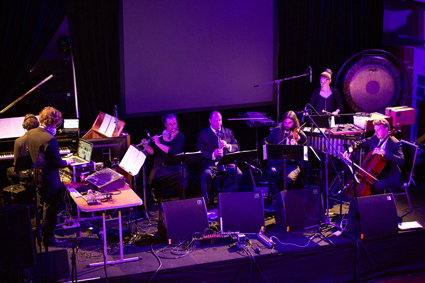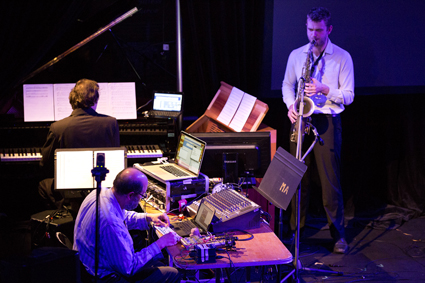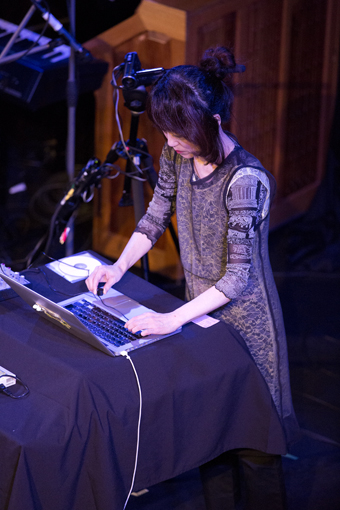contents
Choose...
------------------ editorial
branch nebula
Carry On Culture Wars
Contributor profile: Anne Thompson
Contributor Profile: Bernadette Ashley
Contributor profile: Briony Kidd
Contributor profile: Gail Priest
Contributor profile: Katerina Sakkas
Contributor profile: Kathryn Kelly
Contributor profile: Oliver Downes
Contributor profile: Stephen Carleton
Contributor Profile: Vicki Van Hout
Contributor profile: Zsuzsanna (Zsuzsi) Soboslay
Giveaway: Gayby Baby DVD
my dad, my dog: disconnection sketched
place: beirut, lebanon
place: munich, germany
place: auckland, aotearoa, new zealand
place: beijing, people’s republic of china
place: berlin, germany
Place: Bourges, France
place: brussels, belgium
place: detroit
place: glasgow, scotland, united kingdom
place: hong kong, people’s republic of china
place: santiago, chile
Place: Seoul, South Korea
place: shanghai, people’s republic of china
Place: Split, Croatia
place: wroclaw, poland
place: yogyakarta
Portal archive
realtime tv: claire edwardes & damien ricketson, ensemble offspring
realtime tv: composer profile, cat hope, decibel
realtime tv: composer profile, jon rose
realtime tv: FOLA— Beth Buchanan, I Know That I am Not Dead
realtime tv: joel stern (otherfilm), psycho subtropics
realtime tv: kate champion never did me any harm, force majeure & sydney theatre company
realtime tv: kusum normoyle: s.i.t.e (screaming in the everyday)
realtime tv: lara thoms, the experts project
realtime tv: robyn archer, canberra 100
realtime tv: stuart buchanan, new weird australia
Sideshow Circus Magazine
soundcapsule #1
Studio archive
There's research and there's research
------------------ festivals
a thousand doors, a thousand windows: an ear to the soul
A Winning punch
an other place – austin mcquinn: displaced person
an other place - alex pentek: paper magic
an other place - gough & mcquinn: you are going the wrong way
an other place - lucy bleach: three versions of the outsider
aout - un repas à la campagne: echoes of chekhov
aout - un repas à la campagne: subtle realities
aout - un repas à la campagne: truth in a heatwave
Art shocks, capitalism quakes!
bikini: savage satire, sombre remembrance
Bodies in Flight: And the word was made flesh
Carolyn Wright: Pleased to meet you, again
Charlie Murphy: Durational smooch
David Weber-Krebs: Beyond waiting
David Weber-Krebs: More than it says it is…
David Weber-Krebs: The expectant void
Del Amo and Pereira: Working bodies
dream masons: big magic
dream masons: plumbing problems, design magic
dream masons: the arts centre inside out
dream masons: watery transformations
drive in holiday: stories in the making
entwined: music of the islands
Ethereal exchanges
fever: disciplined mania
fever: organized delirium
frankenstein: a paperhouse of madness
frankenstein: the limits of design
frankenstein: without tears
free range: design deviations
glow: critter conflict
glow: electric life
Gob Squad: Managing fear
Hands up, head down!
Happiness against the odds
Happy as Larry—poor Larry
hey girl!: art object
hey girl!: dark discoveries
hey girl!: evolving symbols
hey girl!: the painted stage
John Gillies: A Geography of Longing and Belonging
John Gillies: Old land, new testament
Kecak, breakdancing, tension & harmony
Larry is sombre
leigh hobba: the performance
leigh hobba: theme and variation
live art mouth to mouth
lura and christine anu: double your diva
Magic in detritus
maintenance of social solidarity: from the bunker
maintenance of social solidarity: getting to the source
maria island of dreams, queen of the snakepit: island homes
Martin del Amo with Gail Priest: Self-generating entities
mercy: fighting form
mercy: the limits of beauty
mercy: the struggle for connection
Miguel Pereira: A dying art
mikelangelo & the black sea gentlemen: risky and lusty
mikelangelo and the black sea gentlemen: macabre good fun
Monika Tichacek: Beautiful bad dream
my dad, my dog: beyond the frame
my dad, my dog: disconnection sketched
my dad, my dog: fuzzy friend
my dad, my dog: unfinished tales
my name is rachel corrie: an intimate invitation
my name is rachel corrie: surrogate conscience
my name is rachel corrie: the weight of artifice
Not so strange strangers
Nurturing Risk Forum: Live art and the risk spin
Nurturing Risk Forum: Testing the safety net
old goriot: a cautious vision
old goriot: from a safe distance
Overview: The mortality manifesto
Overview: The risk of curating
Overview: This isn't a lecture
pacific crystal palace concerts: points of origin
Pacitti Company: Bottomless wishing well
Paul Granjon: It doesn’t hurt at all
Paul Hurley: Oyster romance
Paul Hurley: Suck it from the shell
Percussion: the beating heart of art
queen of the snakepit: intimate and invasive
queen of the snakepit: islands apart
realtime @ push: acknowledgements
small metal objects: an intimate conversation and the perfect front
small metal objects: beautiful logic
small metal objects: deals and dependencies
small metal objects: ordinary guise
small metal objects: the invisible revealed
the black rider: acid power trip
the black rider: between us and the devil
the black rider: heart intact, brain in two
the black rider: the accidents of addiction
the black rider: the carnival from hell
the general: a perfect match
the knitting room: knit one, pearl two
the little match girl: safety first
The not so sweet science
the space between: elastic intimacies
the space between: the art of dependency
the space between: the limits of risk and trust
the spectre of the rose: a slave to desire
the spectre of the rose: embracing horror
The thrill of a cut-above festival
This is how we might live, and die
THIS SECRET LOCATION - Ryoji Ikeda & Alex Bradley/Charles Poulet: Hell and heaven
Tim Etchells: A star is porn
to the wall: an unusual education
to the wall: off the wall
to the wall: wild hypotheses
two trips to enigma
Until Thursday & Yara El- Sherbin: Reality bites back
Vigorous ruminations on happiness
Yara El-Sherbini: If the world gives you oranges…
you will live forever
------------------ special features
animation
art & asylum: politics, ethics, aesthetics
art & disability: new geographies of the body
Art versus the war against Nature
beautiful hybrids
black and white insights
Body regimes
celebrating the flightless phoenix
contemporary chinese cinema
dance on screen
Forum: Wanted: Creative Producers
Getting The Word Out: Writing for Performance and Dance
keith armstrong, media artist
light dance
liquid architecture
lucy guerin inc
mask play
Obituary & Archive: Margaret Cameron
OnScreen Course Guide 2006 - Film & New Media Art
place: barcelona, spain
place: new york, usa
place: sarajevo, bosnia & herzegovina
place: turku, finland
rosie dennis: the truth hurts
Size Matters
sue healey
The other side of Nightfall: Margaret Cameron & Ian Scott
The Place of the Space
The secret life of touring
urban theatre projects
Video + Art = ?
what is music? festival
------------------ performance
Art for water
benedict andrews: a rigorous vision
Grong Grong Creative House
realtime tv at FOLA: Tristan Meecham, Game Show
realtime tv: Chiara Guidi & Jeff Stein, Jack and the Beanstalk
realtime tv: FOLA—Nicola Gunn, Person of Interest
realtime tv: FOLA—What is Live Art?
RealTime Writing Workshop
Rice, rituals and relationships
romeo castellucci & societas raffaello sanzio
rosie article
------------------ dance
...and yet, 1995
10th indonesian dance festival: dance, future tense
A conference for irrevocable change
a dance work revived: faith restored
A momentary wondrous artefact
a not so private hearing
aether, 2005
after glow
age of unbeauty, 2002
already elsewhere, 2005
an intense manifestation of dance
anamorphic archive: the dancer reconfigured
anamorphic archive: the rosie dennis file
aspiration and influence
australia’s most wanted, 2002
beyond absence
borderline control
clan, 2004 (co-choreographer frances rings)
cool tensions
critical mass
Dana Waranara—Privilege and Responsibility
Dana Waranara—Privilege and Responsibility
dance massive 2011 artists: from the archive
Dance on Screen
dance party art
dance project, 2005-2010
Dance, not product, but living culture
dancing between tradition & modernity
dancing into identity
dancing the cosmic murmur
Dancing to the Dana Waranara challenge
dancing to the threshhold
danse (1), 2006
danse (4), 2008
dark symmetries
Data noise & the limits of dance
delirium, 1999
devolution, 2006
displacements: space, stage, workplace
earth's slow death dance
embrace: guilt frame, 2008
engineering the arts
enso, 1998
fighting as performance
fine line and fine line terrain, 2004
fish, 1997
foreign bodies
from betamax to dvd
fun and the damage done
furioso, 1993
g, 2008
ghost dancing
glow, 2006
held, 2004
huit à huit-dance for the time being, 2009
human interest story, 2010
i want to dance better at parties, 2004
in bed with a mortal engine
In Profile: Miranda Wheen
In Profile: Nick Power, b*boy, choreographer
in time series, 2005-2007
indonesian contemporary dance: multiple personalities
inner-scapes
inside the audience
into the vortex
journey into light
kinetics: sculpted & danced
lateral intimacies
limina, or saying yes to no
lines of flight
love and its disconnects
mathinna, 2008
melt, 2002
monumental, 2006
more than smoke and mirrors
morphia series, 2002
mortal engine, 2008
nalina wait: five minutes of madness
nalina wait: invisible forces
nalina wait: making room
nalina wait: night secrets
nalina wait: one dancer, two bodies
nalina wait: the body danced
nerve 9, 2001
noise in contemporary asian dance
nothing hidden, much gained
nothing to lose
now, then, now
ochres, 1995 (co-choreographer bernadette walong)
old tropes & the new disconnect
one shoe on, one shoe off
original home, 1999
passing strange
post-apocalyptic drive-in dancing
quotidian moves, gangnam-style
rabbits down the hole
realtime tv: anouk van dijk, 247 days, chunky move
realtime tv: anouk van dijk, 247 days, chunky move, dance massive 2013
realtime tv: antony hamilton, black projects 1& 2
realtime tv: antony hamilton, black projects 1& 2, dance massive 2013
realtime tv: choreographer garry stewart, be your self
realtime tv: dalisa pigram, gudirr gudirr
realtime tv: dalisa pigram, gudirr gudirr, dance massive 2013
realtime tv: lee serle, p.o.v.
realtime tv: lee serle, p.o.v., dance massive 2013
realtime tv: stephanie lake, dual
realtime tv: stephanie lake, dual, dance massive 2013
realtime tv: tim darbyshire, more of less concrete
realtime tv: tim darbyshire, more of less concrete, dance massive 2013
realtime video interview: gideon obarzanek
realtime video interview: luke george
realtime video interview: madeleine flynn & tim humphrey
realtime video interview: michelle heaven & brian lucas
realtime video interview: rosalind crisp
realtime video interview: trevor patrick
ritual entwining
run—a performance engine, 2009
same, same but different, 2002
shaking the spectator's heart
simultaneities
something ends, something begins
songs with mara, 1992
strange affliction: dance massive & transcendence
strange worlds, mutating forms
structure and sadness, 2006
such is life, and so is love
sunstruck, 2008
suspending the audience
swift, 2003
talking australian dance internationally
tense dave, 2003
the age im in, 2008
the body un-mirrored
the curiosities, 2008 onwards
the life in the work
the limits of the extraordinary
the meeting point
the oracle, 2009
the origins of feeling
the poetry of pain
the return of the super-marionette
the truth of the matter, or not
the uneasy weight of metaphor
the unexploited
triple alice, 1999-2001
triptych, 2008
unsettling the audience
when does forever end?
who’s zooming who?
will time tell?: into the cultural vortex
will time tell?: many times
will time tell?: multiple beings
will time tell?: precise moves
words for the time being
working the audience
worlds within
youtubing live
------------------ visual arts
In Profile: Jason James, artist
In Profile: Keg de Souza
Realising regional ambitions
------------------ sound/music
A choreography of oscillation
A fine plenitude
a language in process
A pyrrhic revolt
Adventures in timbre and texture
ai yamamoto
anthony pateras
blip (jim denley, mike majkowksi)
Bridges and deviations
camilla hannan
Celestial sweet spots
charlie charlie & will guthrie
Churches of sound
clare cooper & chris abrahams
clocked out
clocked out
clocked out - archive highlight
decibel
dj olive
Eclectic ecstasies
erdem helvacioglu
eugene ughetti, realtime video interview
Explorers of an alien planet
familiar maps, new territories
Folds: loose, taut & generative
found: quantity of sheep
hinterlandt
in osborne park no one can hear you scream
In Profile: Rachael Dease
james rushford
jodi rose & guest artists
joel stern
Jon Rose
jouissance
lawrence english
lawrence english
liquid architecture (updated)
loren chasse
Madness, hell and transcendence
marina rosenfeld, realtime video interview
mark cauvin
matt chaumont
michael j schumacher
mike majkowski
Motion in stillness
movement and stasis
new weird australia editions: thomas williams vs scissor lock, spartak
pateras/baxter/brown
Percussive partnerings
philip brophy
Piano adventures
Pianos wired
Programming a grotesque order
realtime tv: Sarah Last, Wired Open Day
Regional Profile: Jason Richardson
rice corpse
robin fox
rod cooper
ros bandt, johannes s sistermanns
sky needle
soundcapsule #2
soundcapsule #3
soundcapsule #4
soundcapsule #5
Space-making Immersive vocal improvisation
Speak Percussion
tarab
teased by the trickster
The epic resonances of diffusion
The many-voiced cello of an Australo-German repertoire
the necks
The piano and its others
The sound of reading
The sound shapers
the splinter orchestra
the wired lab
tim o'dwyer
topology
totally huge new music festival 2011
Totally Huge’s percussive climax
toydeath
various
various
various
various
various artists produced by le tuan hung; dindy vaughan
warp: various artists
water, wind, earth, fire
what remains: the sum of differences
Young composers let loose
zane trow
zephyr quartet
------------------ onscreen - film
australian indigenous film
realtime tv: Isaac Julien, PLAYTIME
------------------ onscreen - media art
'Pure' experience, in the round
A curative dose of spontaneity
a meeting with steve dietz
Aural ecologies, mechanical and musical
Being Stelarc
Data lives
Eastern Riverina sites & sounds
Heck, baby, I shoulda seen it comin…
Home, sweet home
If a system fails in a forest, is anybody listening?
In Profile: Alison Bennett, Shifting Skin
In Profile: Chris Howlett, ARGARMENIA
In Profile: Sarah-Mace Dennis
In the digital age, love your stationery obsession
Knowing your place in Cartesian space
Life and death, and the membranes inbetween
M e d i a a r t t h e n a n d n o w
media arts education digest 2002-2008
More than meets the eye
Musical multiverses
Nailing the virtual
New tools and old skool grammars
Night work
Olfaction, decay & speculation
Outside the labyrinth…looking in at someone waving
Painting by algorithms
Palpable virtualities
Past-present tensions
Pop up pleasure zones
Rainbow over ISEA
realtime tv @ ISEA2013: Catching Light, Campbelltown Arts Centre
realtime tv @ ISEA2013: Catching Light, Campbelltown Arts Centre
realtime tv @ ISEA2013: EchoSonics, UTS Gallery
realtime tv @ ISEA2013: EchoSonics, UTS Gallery
realtime tv @ ISEA2013: semipermeable (+), SymbioticA
realtime tv @ ISEA2013: semipermeable (+), SymbioticA
realtime tv @ ISEA2013: The very near future, Alex Davies
realtime tv @ ISEA2013: The very near future, Alex Davies
realtime tv @ ISEA2013: Velonaki, Ingram, Gemeinboeck & Saunders, Artspace
realtime tv @ ISEA2013: Velonaki, Ingram, Gemeinboeck & Saunders, Artspace
realtime tv @ ISEA2013: Zydnei, Troy Innocent
realtime tv @ ISEA2013: Zydnei, Troy Innocent
Run for your lives [1]
Run for your lives [2]
Stars and starlings, pixels and picknickers
Start by leaping off a small stool
The big connect
The science and art of tangible things
The uncanny in the gallery
The weight of public spaces
To re-map and reclaim
Touch me there
Transformational walking
Turning the media back on itself











 back
back